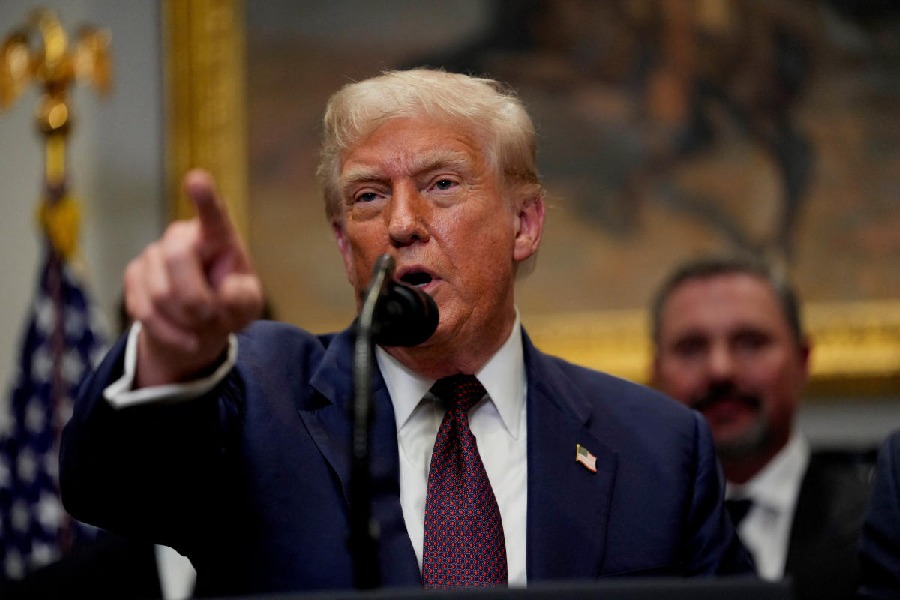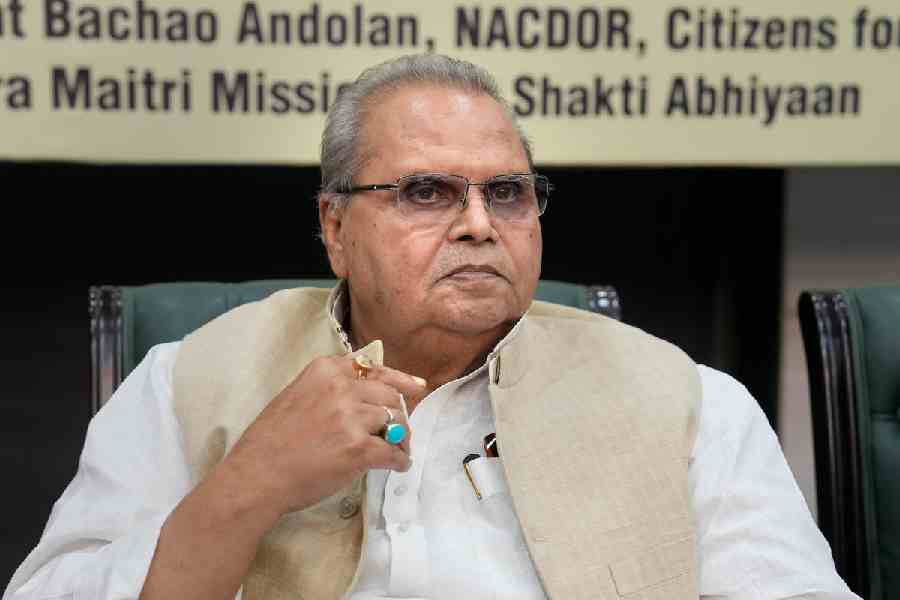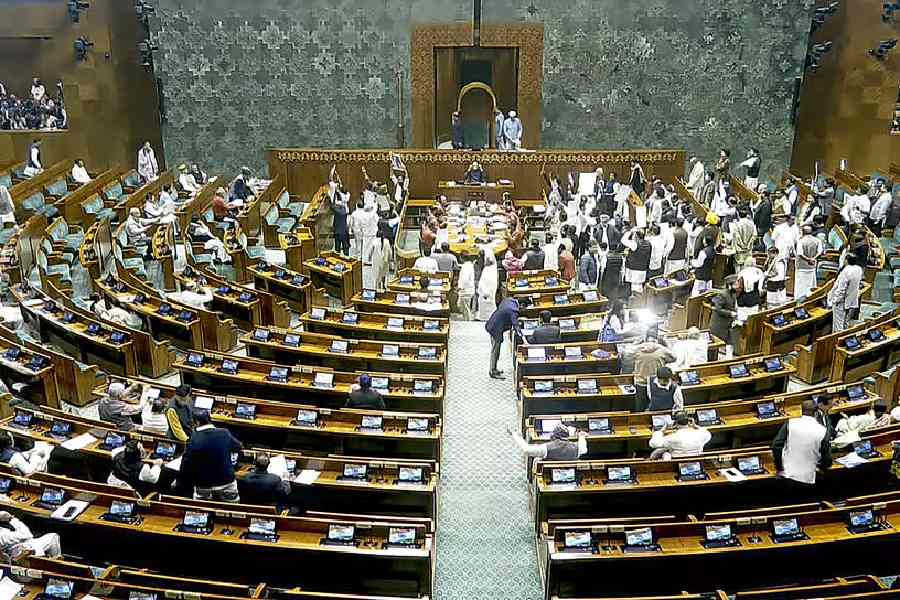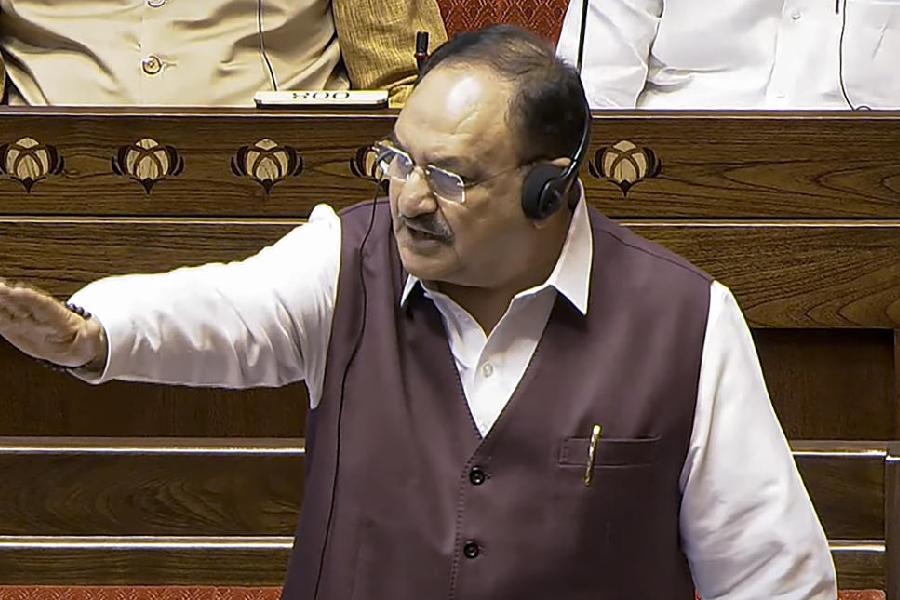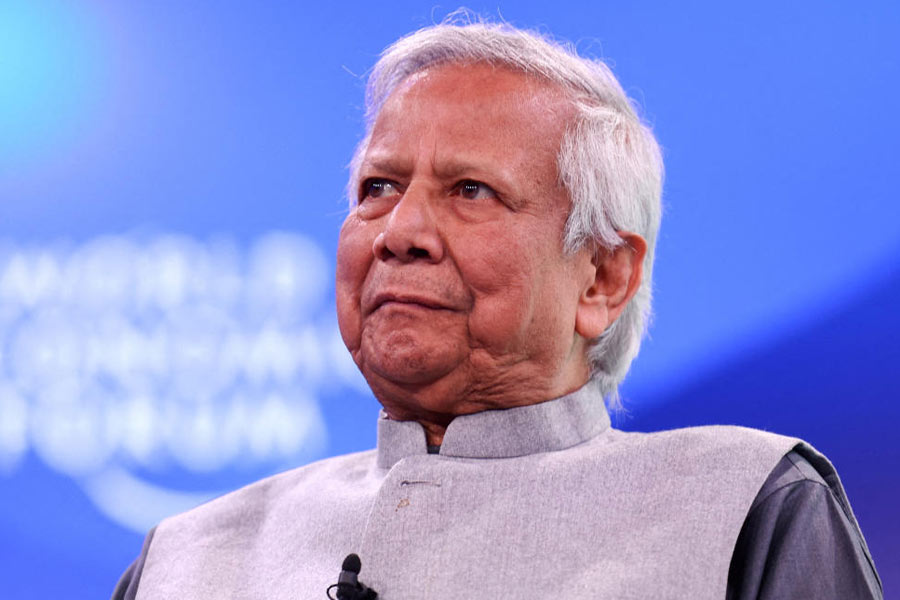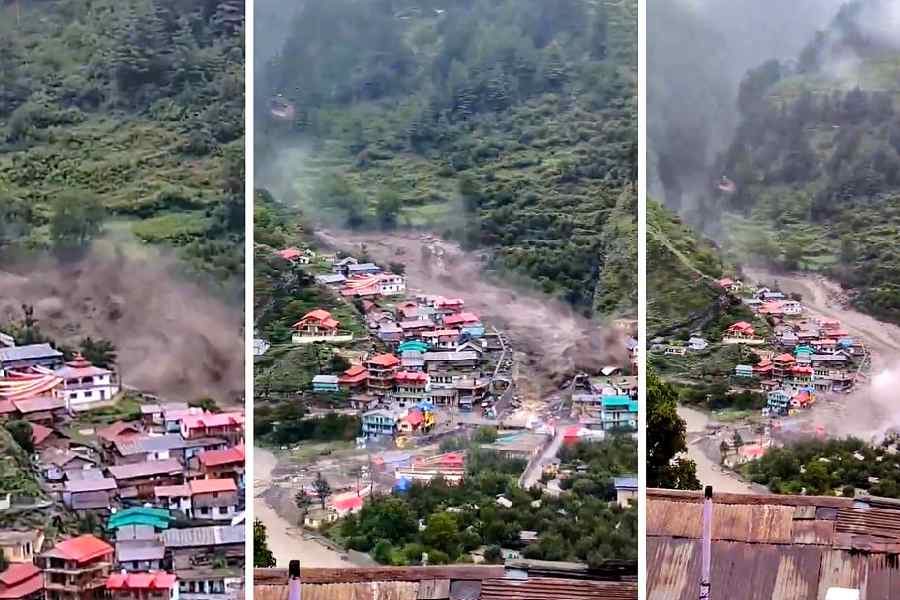Divided down the plate
V. Kumara Swamy scents the divisive — and delicious — rivalry brewing between Andhra and Telangana

People had gathered to welcome P.V. Sindhu in Vijayawada when she returned from Rio, but Murali Krishna was not among them. The restaurateur stayed home when the badminton Olympian was driven down from the airport in an open bus.
Krishna still can't come to terms with the fact that the silver medal winner had accepted a Rs 5-crore cheque from the chief minister of Telangana, K. Chandrashekar Rao (KCR), on August 22. "He had called the people of Andhra Pradesh such names as kukkalu (dogs). He had said he would throw out settlers from Telangana. Sindhu is a settler as her parents are from Andhra. She shouldn't have accepted anything from the Telangana government," Krishna grumbles.
He wasn't there to cheer Sindhu at the Indira Gandhi Stadium either. Andhra Pradesh chief minister N. Chandrababu Naidu presented her with a cheque of Rs 3 crore, played a round of badminton with her and called her a Telugu bidda - Telugu child. But many, like Krishna, thought the Andhra CM should have upped the reward money to match the Telangana cheque.

The tug of war over Sindhu underlines the bitter battle that has been building up ever since Andhra Pradesh split into two states in 2014. It was thought that the feud over land and culture would stop once Andhra gave birth to Telangana. But there is no sign of a ceasefire.
The two sides are fighting over the division of assets; they are racing to re-write their histories, minting new heroes and dropping some; and they are staking claim to or abandoning literary figures. Even food is being cleaved.
"People are making careers out of discovering and writing more on what divides the states than on what unites them," rues Srikanth Reddy, a Hyderabad-based industrialist and former member of Naidu's Telugu Desam Party (TDP).
In the debate over bifurcation that had carried on for decades before Andhra Pradesh split, the "separatists" of Telangana had often lobbed social, economic and cultural grenades at the more dominant coastal and Rayalaseema regions for what they described as the "suppression" of locals.
"Our textbooks before bifurcation were written by historians from coastal Andhra who suppressed our glorious past. That will not happen now," says historian Adapa Satyanarayana, who is out with a book called History Culture and State Formation Struggles. New history books in Telangana claim that human settlements in the region predated those in Andhra.

Andhra has its own version of history - as underscored in a 2013 book called Refuting an Agitation: 101 Lies & Dubious Arguments of Telangana Separatists, authored by Parakala Prabhakar. Many of the so-called lies that the author mentions are now a part of school syllabi in Telangana. "What can we do," laughs Prabhakar, Naidu's communication adviser. "The re-writing indicates cultural and historical insecurity."
One of the contentious issues is Andhra's choice of a new capital, Amaravati. "They announced with much fanfare that Amaravati was the capital of the Satavahanas, who ruled in the first and second centuries AD. But the first capital of the Satavahanas was at Koti Lingala in the Karimnagar district of Telangana. The Satavahana kingdom started here, not in today's Andhra," Satyanarayana says.
Andhra is at a disadvantage there, for Amaravati, which, according to the blueprint, will be dotted with swanky multistorey buildings, boulevards, water parks, gardens, golf courses and so on, is still more or less just a plan.
In Vijayawada, which is the de facto capital until Amaravati is ready, any talk of Telangana opens up old wounds. "It is almost like the Partition of India and Pakistan," says E. Siva Nagi Reddy, a Vijayawada-based Buddhist scholar and archaeologist.
The problem, clearly, is that the two states have a strong history of shared heritage. But efforts are on in Telangana to find distinct days for celebration.
For the last two years, the people have been observing the Telangana Language Day on September 9, which is the birth anniversary of Kaloji Narayana Rao, a contemporary poet and writer belonging to the Telangana region.
"What's the harm in that," asks Elluri Siva Reddy, a linguist and long-time Telangana activist based in Hyderabad. "We need to recognise our own literary figures," he says. Likewise, Bonalu, which is similar to village deity festivals common to both the states, has become Telangana's state festival because it is celebrated in Hyderabad and surrounding areas, industrialist Reddy points out.
Language is kicking up a row, too. Reddy holds that the "purists" of coastal and Rayalaseema regions have for long made fun of the Telangana dialect, which has several Urdu and Persian words.
Not surprisingly, some ancient and revered poets have fallen victim to the divide. Nannayya Bhattaraka, an 11th century poet and translator of Mahabharata into Telugu and a treatise writer on Telugu grammar, has for long been called the adikavi, the first poet. But not any longer in Telangana, which now lays claim to Pampa, the poet who lived near Vemulavada in Telangana in 10th century AD.
"Unlike Nannayya who merely translated, Pampa, who lived a century before him, also wrote several original works. He is the real adikavi," Satyanarayana stresses.
Andhra's freedom fighters have slowly been weeded out of Telangana textbooks. And Andhra in its revised history for the state's civil service aspirants is said to be dropping several historical events and figures belonging to Telangana.
Yet another bone of contention is food. In fact, food had emerged as a divisive factor way back in 1952, when Telangana's " Mulki (locals) Movement" threw up a slogan that said, non-mulkis go back, idli-sambar go back. "Coastal Andhra people were generally identified with idli-sambar before the Centre combined both the regions in 1956," says Prabhakar Reddy of the ruling Telangana Rashtriya Samiti.
The fight over food is fierce. While Telangana's millets such as ragi and jowar are considered healthier than the coastal staple of rice. Karimnagar Mutton, a peppery hot mutton dish, is taking on Andhra's Gongura Mutton in some newly opened Telangana cuisine restaurants in Hyderabad. "Telangana has more varieties of non-vegetarian food, because it was under the Nizam's rule for many years," says Mandaar Sukhtankar, executive chef at The Park, Hyderabad.
A stuffed chapati-like sweet, called pole bakshyalu in Telangana and bobbattlu or oligalu in coastal Andhra and Rayalaseema, is being pulled from both sides, too. "The preparation differs in each region, but the controversy is over where the dish originates from," Hyderabad's celebrity chef Sudhakar Rao says with a laugh.
What about Kuchipudi? The dance gets its name from a Krishna district village in Andhra, but Telangana holds that it was promoted widely by the 16th and 17th century Qutub Shahi dynasties of Golconda. Perhaps sensing trouble, Andhra chief minister Naidu recently decreed that all government-held functions must have a Kuchipudi dance recital.
"We should look at everything from a larger perspective. If this narrow vision of interpretation continues, it will harm future generations," G.V. Purnachand, writer and historian cautions.
D.A. Somayajulu, former economic advisor to the undivided Andhra Pradesh government and currently with the YSR Congress, says the states will be tested on the sharing of the river waters of Krishna and Godavari. "Only then will people realise the price of bifurcation," he says.
In the meantime, the fight continues. What if the Kohinoor diamond ever returns to India? It was mined at Kolluru in today's Andhra, but was in the possession of the Kakatiya rulers of current day Telangana.
More than a river between them
Tamilians and Kannadigas have been sparring for years now, says Kavitha Shanmugam
There's more to the Tamil Nadu-Karnataka dispute than the 765-kilometre-long Cauvery river. The antagonism possibly dates back to the 19th century. The British had shifted their military garrison to the cantonment area of Bangalore from Srirangapatna. The subsequent migration of the neighbouring Tamilians to Karnataka was but natural. As Bangalore city developed, the migrant community took up local employment, oftentimes preferred to the locals for their industriousness.
The Tamilians embraced Bangalore, but not its culture. Ghandi Doss, a Bangalore-based professor of social work, believes Tamilians had a superiority complex. "Kannadigas felt subsumed."
According to G.K. Karanth, who used to teach sociology at the Institute for Social and Economic Change, Bangalore, the "antagonism" intensified when Tamil Brahmins dominated the Maharaja of Mysore's bureaucracy.
In the 1920s, it was Tamil Nadu that led the "anti-Brahmin Dravidian movement" aimed at achieving a society where backward castes would have equal human rights. Says Kshithij Urs, who heads NGO Action Aid's Karnataka office and also teaches public policy at the National Law School of India University, Bangalore, "They hijacked the Dravidian movement."
Then in the 1940s and 50s, the separatist anti-Hindi movement spearheaded by the Tamilians made the Kannadigas uncomfortable. "If language was the basis of state formation, river has become the basis for the display of cultural solidarity," says Karanth.
T.G. Damodaran is vice-president of Bangalore Tamil Sangam, a social organisation of Tamilians. He does not buy this theory of culture wars. "If there are good rains, you won't hear any talk of a Tamilian-Kannadiga divide," he says and goes on to add that while one crore Tamilians live in Karnataka, 80 lakh Kannadigas live in Tamil Nadu. "Kannadigas are not aware that a sizeable number of people from their state live in Tamil Nadu. They, somehow, believe only Tamilians migrated to Karnataka."
Former DGP of Karnataka, R. Ramalingam, was the police commissioner in December 1991, when the anti-Tamil riots broke out, over the Cauvery. "Kannadigas always resented Tamilians... and the pent-up feelings exploded when the Cauvery issue was decided in favour of Tamil Nadu."
Ramalingam is sympathetic towards the Kannadigas. "It is unfair of Tamil Nadu to cultivate the water intensive samba crops when Karnataka has a water crisis." C. Subbu, who belongs to the Tamil Nadu Farmer's Association in Erode, says farmers in the Cauvery basin don't have any animosity towards each other. "Karnataka farmers come to sell turmeric in Erode. We don't trouble them." However, the Cauvery Kudumbum, an organisation comprising farmers from the Cauvery basin, of both states, formed to solve the water-sharing problem has petered out.
A senior Kannadiga journalist, who does not want to be identified, says he cannot understand why there are no confrontations with Telugus or Maharashtrians living in Karnataka. "We have water disputes with Maharashtra and Andhra Pradesh, but we don't fight them."
Salem-based K.P. Natrajan is managing director of KPN Travels, whose buses were torched during the recent riots in Bangalore. He says, "If burning my buses will solve the Cauvery problem, I am ready."
Jayaraj Naidu, member of one of the many radical pro-Kannada groups formed to uphold "Kannada pride", will have none of this Tamil altruism. "He burnt his own buses for insurance," he retorts.
Perhaps it is easier to divide the waters than unite this lot.
With inputs from Varuna Verma


